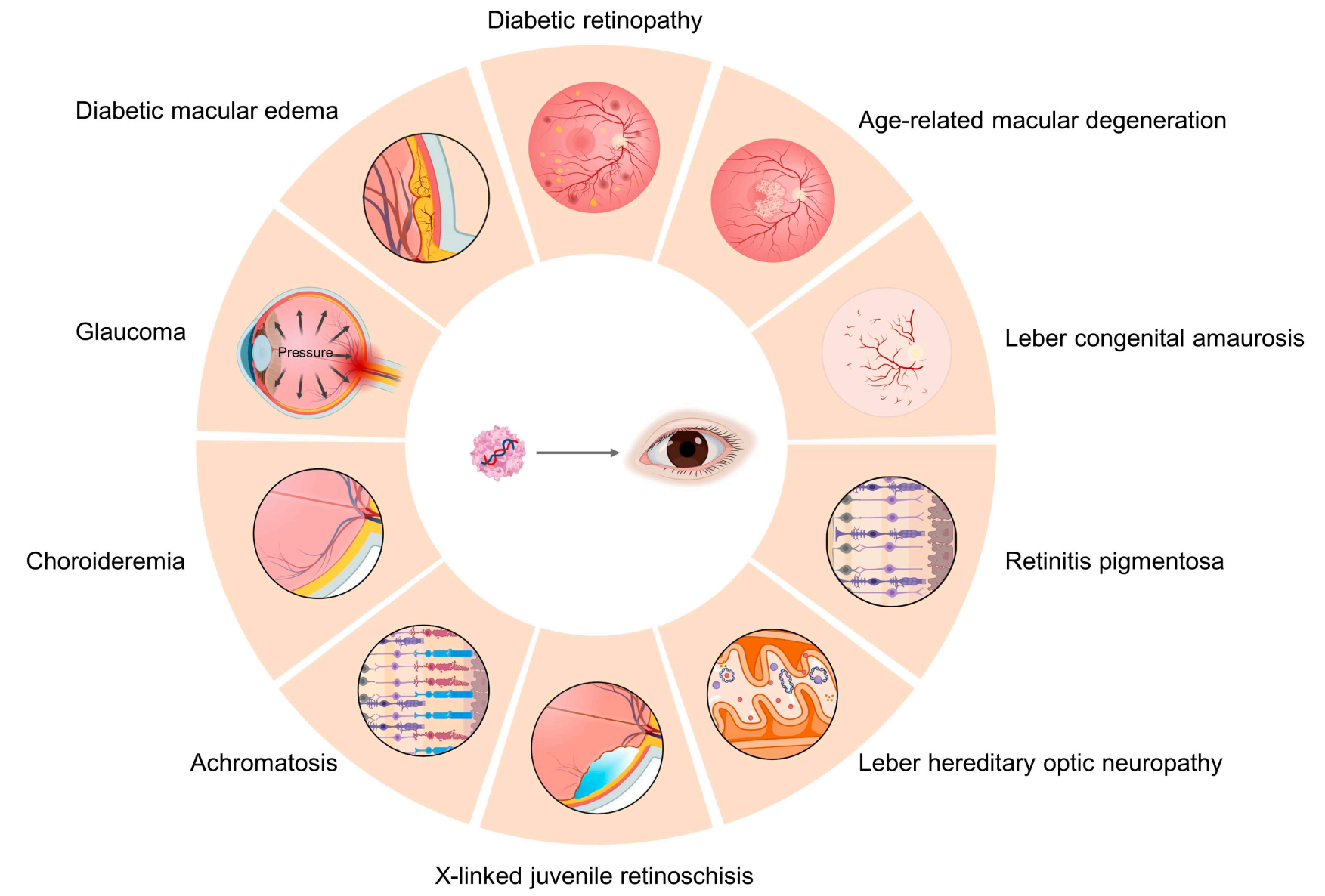AAV for gene therapy in ocular diseases: Progress and prospects
As one of the most important vectors in gene therapy, adeno-associated virus (AAV) has been universally used in clinical treatment of various genetic diseases. At present, gene therapy drugs based on AAV have been researched worldwide and significant therapeutic effects have been achieved in clinical diagnosis and treatment. Owing to the blood-eye barrier and the diversity of cell and tissue types, the eye has a relatively independent and enclosed internal environment, making it one of the most ideal target organs for gene therapy.
So far, AAV is being vigorously promoted in clinical research, and AAV delivery strategies for various types of eye diseases are constantly being developed. Leber congenital amaurosis, Retinitis pigmentosa, Leber hereditary optic neuropathy, X-linked juvenile retinoschisis, Achromatosis and other retinal monogenic genetic diseases were firstly applied to AAV gene therapy and promising therapeutic effects have been achieved. In recent years, significant progress has also been reached regarding optimized AAV targeted treatment strategies in age-related macular degeneration, diabetes retinopathy, glaucoma and other non-monogenic common ocular diseases (Fig.1).

Fig.1 AAV based gene therapy for eye disease types in clinical trials
The eye is a complex and delicate organ, with various types of tissues and cells fulfilling their respective functions, and thus enables individuals to obtain accurate visual information. Various types of eye diseases not only differ from pathogenic mechanisms, but also their pathogenic tissue locations. Accurately targeting diseased tissues through different delivery methods can effectively reduce the amount of AAV used, and improve the safety and efficacy of AAV mediated gene therapy, which is another efficient way to optimize ocular gene therapy. In spite of the limited functional region of subretinal injection, it can precisely act on the diseased layers of retina. In comparison, the functional area of intravitreal injection is relatively broad but the effect is limited. Anterior chamber injection target tissues such as cornea, lens, ciliary body, and trabecular meshwork. Subconjunctival injection and suprachoroidal injection effectively work for the surrounding tissues. Choosing the appropriate AAV delivery pathway make gene therapy for ocular diseases more effective with less effort (Fig.2).

Fig.2 AAV delivery path in the eyes
Gene therapy for ocular diseases has developed rapidly in recent years, with AAV being one of the most important delivery vectors. Through targeted screening, random design, and other methods to modify the AAV capsid, genome modification strategies such as using tissue-specific promoters and shortening the end domain can continuously optimize its delivery effectiveness and specificity. The enormous application prospects have also prompted more and more clinical research to be conducted. In the near future, it is expected that AAV mediated gene therapy drugs for eye diseases will be researched internationally and domestically, benefiting many patients.
Sources: https://doi.org/10.34133/ research.0291
Tag: Health Science
